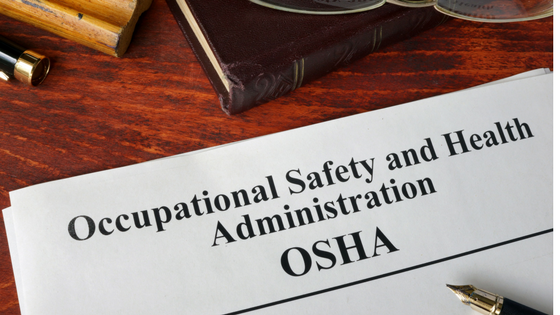Priority Workforce, Inc. and JSL Foods, Inc. were fined a combined total of $300,000 in April 2019 for an on-the-job injury that cost an employee two fingers. For JSL Foods, Inc., this wasn’t the first accident nor the first citation from the Occupational Safety and Health Administration (OSHA).
In 2015, the company was twice cited for failure to follow established safety procedures for disabling machinery before service; this most recent citation from Cal/OSHA was for the same violation, plus six more. Some of the violations were specifically noted as “willful repeat” violations. The penalties were $276,435.
Priority Workforce’s violations included a failure to have a workplace illness and injury prevention program in place with adequate training for employees. The penalties were $29,250.
There is no word yet on whether either company will decide to appeal the citation and penalties.
A Serious Injury is Investigated by OSHA
In 2018, a temporary worker assigned by Priority Workforce, Inc., to clean a dough rolling machine at JSL Foods, Inc.’s manufacturing plant in Los Angeles got his hand caught in the rollers and lost two fingers.
When Cal/OSHA looked into it, the agency discovered that there were no safety guards on the machine to prevent exactly this kind of injury, and no lock out on the machine to ensure all moving parts were stopped while it was being serviced. In addition, OSHA discovered that the employee had not been trained on proper safety procedures before working on the machinery, including disconnecting the power, physically disabling the machine from being turned back on, and marking it in such a way that others knew it shouldn’t be turned back on.
When There’s a Serious Workplace Injury
Employers are required to notify OSHA anytime there’s workplace injury that results in an employee being admitted to the hospital, undergoing amputation, or losing an eye, except under very limited circumstances. Once the incident occurs, the clock starts ticking; employers have 24 hours to make their report. Among the required information is a description of what happened as well as a contact name and number for the employer. OSHA will then initiate an investigation. Depending on the results of that investigation, the employer may be liable for citations and penalties.
OSHA Citations and Penalties
OSHA’s maximum penalties for willful or repeated violations can be ten times the penalty for a serious, other-than-serious or posting violation, and that penalty is compounded per violation, which can add up pretty quickly. State programs are subject to OSHA approval and are required to be as stringent as the federal agency’s regulations and penalties.
OSHA’s compliance assistance specialists can help employers improve their adherence to federal health and safety regulations for the workplace. This has the dual benefit of reducing work-related illnesses and injuries and reducing the chances that an employer may be cited with penalties for violations. Outreach programs available by topic include fall prevention, the Safe + Sound campaign, small business, temporary workers, trenching, and young workers. State programs also generally offer compliance assistance and resources.
Appealing the Citation
If for some reason, an employer feels that they were improperly cited by OSHA, there is an appeals process. The employer can turn to the Occupational Safety and Health Review Commission (OSHRC), a separate and independent federal agency for consideration.
There are two levels of review and two kinds of appeal. One is more formal and functions very similarly to a legal case heard in a court of law. The other, Simplified Proceedings, is more informal and may be appropriate for simpler cases. Legal counsel is permitted but not required at Review Commission Hearings. OSHA, through the Secretary of Labor (because OSHA is under the Department of Labor) does make its case with an attorney whose job it is to prove the citation was appropriate, similar to a court of law.
The judge hearing the case can approve it (saying OSHA was right to cite the employer), modify the citation or vacate it (throw it out) and provide a written decision outlining the reasons. At that point, either side has 30 days in which to appeal again for a review of the case by three OSHRC Commissioners. If the appeal is accepted, the case is reviewed again by the Commissioners, and they may approve, modify or vacate the citation. There are other avenues of appeal to the U.S. Circuit Court of Appeals or the U.S. Court of Appeals, depending on the decisions of the three OSHRC Commissioners.
Know Your Rights and Responsibilities
No company wants to receive a citation with penalties from OSHA, nor does any company want to see its employees harmed while on the job. But if it does happen, it’s important to know your responsibilities and your rights. Being aware of OSHA regulations is a good first step in minimizing the chances of such an incident happening. Being aware of the appeals process is important too, because employers do have rights.
See how OSHA reporting software can help streamline your recordkeeping process.
